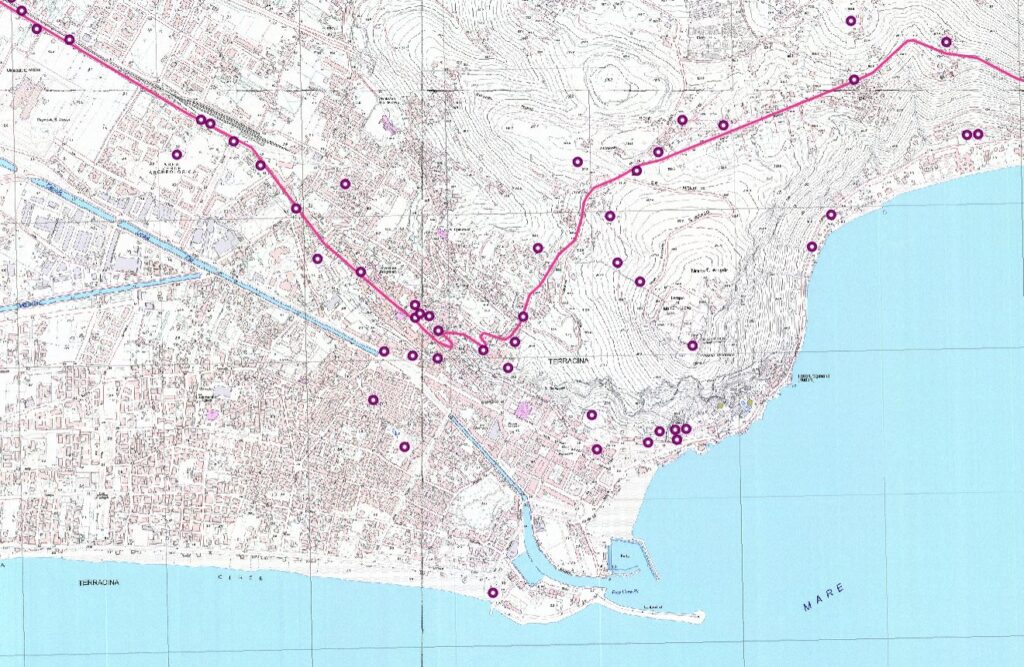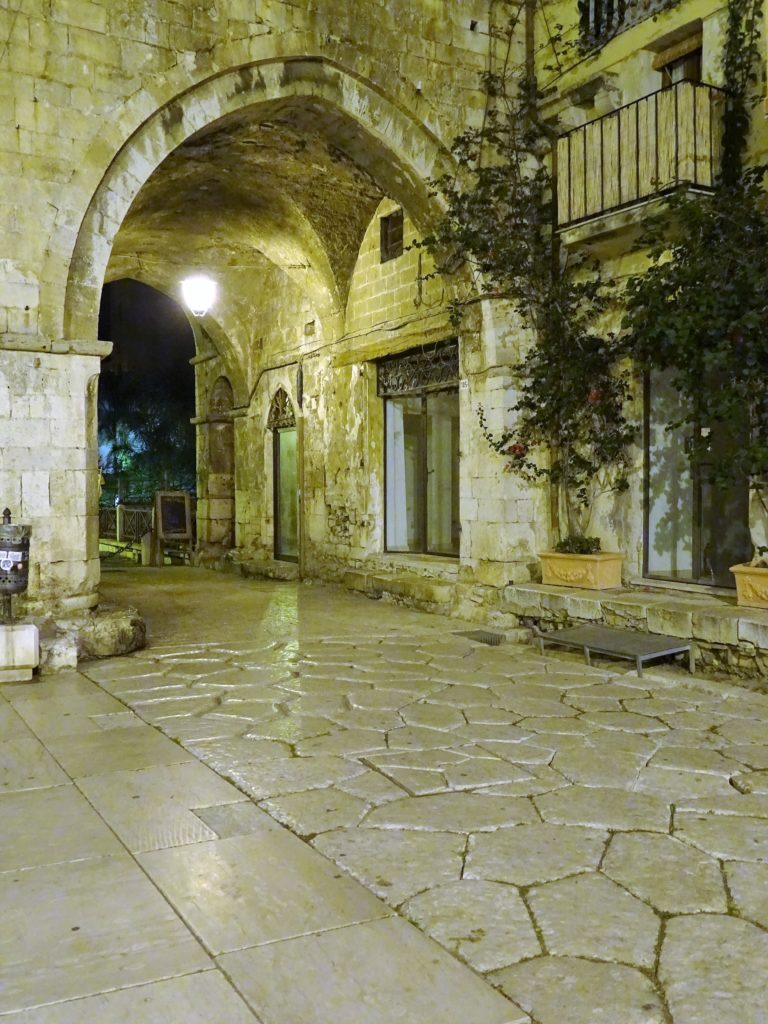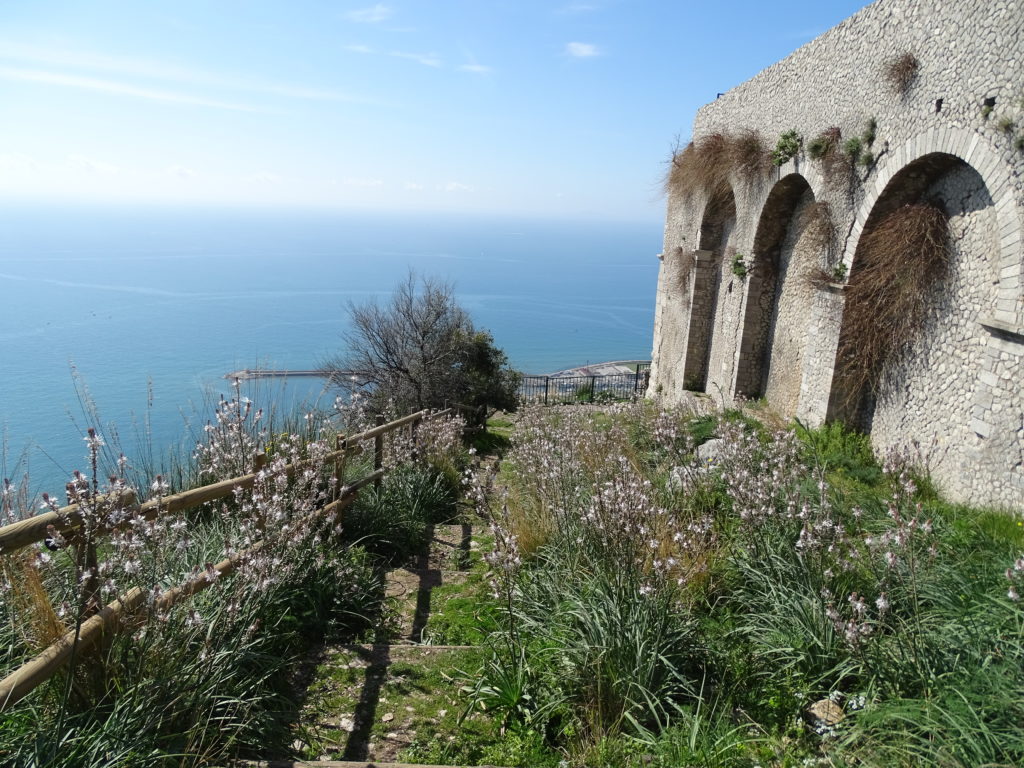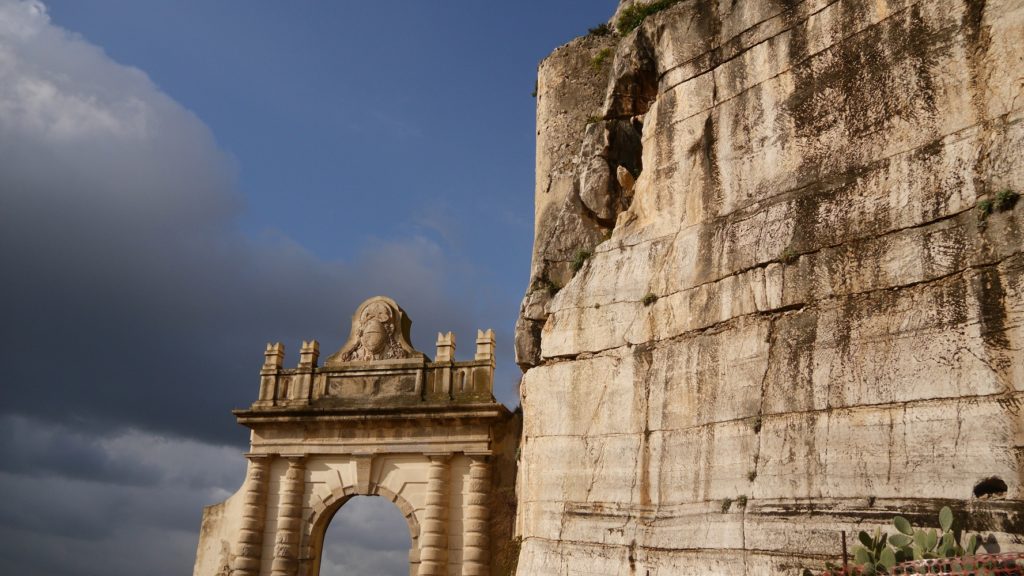
Map of Terracina and its surroundings. In red the Way that follows in this stretch with precision the Ancient Appia. The circles indicate the presence of archaeological remains (base Technical Cartography Lazio Region)
Roman influence on Terracina started early in the 6th century BC but became stronger when, after the occupation of the Volscis – who gave it the name of Anxur- Rome, Roman conquered it on 406 BC and again on 400 BC.
In 329 BC, the Roman colony named “Colonia Anxurnas” was deduced. During this period large sections of the walls and fortifications were built.
On 312 BC The Appia Way, connecting Rome with Capua, passes across Terracina making it growing of importance. The pavement of the Ancient Street is still clearly visible (albeit partly reconstructed) in the central core of the Roman city (Emiliano Forum).
In the 1st century BC – under Lucius Cornelius Silla – was built the theatre , and rebuilt in new, more scenic forms, the temple of Jupiter Anxur. In addition to the important agricultural center Terracina had also a port that allowed its commercial activities not only with the southern territories but also with the East.
etween the end of the 1st century BC and the beginning of the 1st century A.D. the “Emiliano Forum” was rebuilt, paved, equipped with porches and new civil and religious buildings by the local magistrate Aulus Aemilius. It became a real monumental complex worthy of an imperial city.
But it was under Emperor Trajan (98-117 A.D.) that Terracina reached his heyday. The emperor ordered the expansion of the port of Terracina, and the main structures are still visible today, and he ordered the Pisco Montano – a huge limestone spur separated from the mass of Mount Sant’Angelo – to be cut, in order to allow a new and easer way to the Appia near the sea. On the cut of the rock, that still stand over the “queen viarum” are reported, and even today well visible, the Roman numerals that sign the progressive height of the cut (128 Roman feet, about 37.88 meters).
In the history of Appia, we c meet again Emperor Trajan, not in Terracina but between Benevento and Brindisi with the construction of the Appia Trajan – 108 and 110 A.C, using a pre-existing path of republican age, which allowed to go along the Adriatic sea, connecting various ports of great commercial and military importance.
Coming back on Terracina history, at the beginning of the 5th century A.C. there was another important urban intervention: the erection of a new wall that enclosed part of the lower city.






